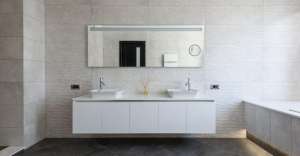Good design often goes unnoticed because it works effortlessly. This principle is at the heart of universal design, a framework for creating environments and products that all people can use without the need for adaptation.
This approach focuses on inclusivity and fosters environments that support everyone’s physical and mental health. Let’s talk about how universal design promotes wellness for all.
It Fosters Independence and Dignity
Universal design empowers individuals by removing barriers that might otherwise limit their autonomy. Features such as zero-step entrances, wide hallways, and lever-style door handles benefit wheelchair users, parents with strollers, delivery workers with dollies, and individuals with temporary injuries.
When spaces are easy to navigate, people can perform daily tasks without assistance, which improves their self-esteem and dignity. This built-in ease of use reduces daily frustrations and the mental load associated with navigating inaccessible environments, giving people a greater sense of control and well-being.
It Reduces Physical and Mental Strain
Poorly designed spaces can cause unnecessary physical and mental stress. Universal design principles aim to minimize this strain by creating intuitive and comfortable environments. For example, good lighting reduces eye strain for everyone and is particularly helpful for those with visual impairments.
Clear and simple wayfinding, including tactile signage is another great example, as it reduces anxiety and confusion in complex buildings. Braille sign manufacturers must ensure ADA compliance to aid navigation for people with visual impairments. This supports the broader goal of creating a predictable and stress-free experience for every user.
It Encourages Social Connection
Inclusive spaces naturally encourage community and social interaction. When public parks, buildings, and transportation systems are accessible to everyone, it invites people of all ages and abilities to participate in community life. Ramps alongside stairs, accessible playground equipment, and public seating with space for mobility devices are all examples of designs that bring people together.
Removing obstacles to participation combats the social isolation that can arise from physical limitations. This sense of community and connection that universal design provides is a vital component of overall wellness.
A Blueprint for a Better Future
Universal design promotes wellness for all by embedding equity and empathy into the fabric of our world. It challenges us to think more broadly about who our spaces serve. By creating environments that are inherently inclusive, we can build a society that supports the physical health, mental peace, and social vitality of every individual.






